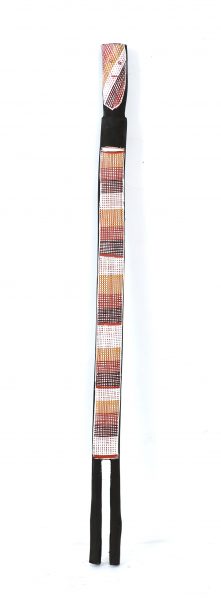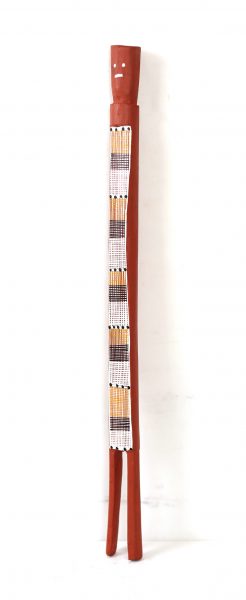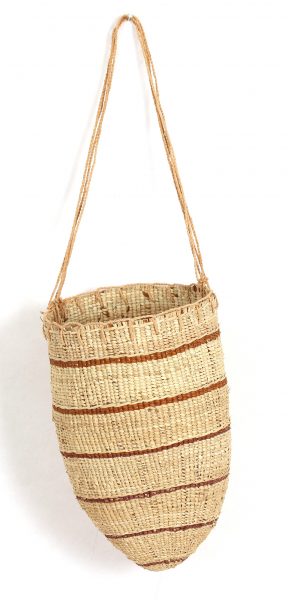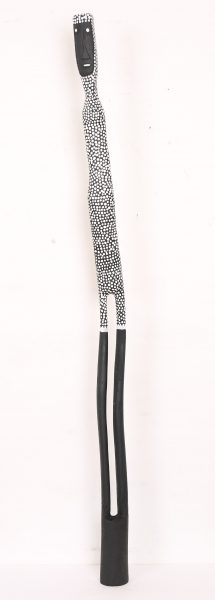











Maningrida Arts & Culture
An art movement that is striking, political and enduring: this is what contemporary artists in Maningrida and the surrounding homelands have built, powered by their ancestral connections to country and djang.
Ways of learning and schools of art in Arnhem Land are based around a system of passing knowledge and information on to others. The art here has its genesis in body design, rock art and cultural practices, in concert with more than 50 years of collaborations, travel and political action to retain ownership of country. Values and law are expressed through language, imagery, manikay (song), bunggul (dance), doloppo bim (bark painting), sculptures, and kun-madj (weaving) – the arts.
The artists’ transformation of djang into contemporary artistic expression has intrigued people around the world: art curators and collectors, and stars including Yoko Ono, Jane Campion, David Attenborough and Elton John. Pablo Picasso said of Yirawala’s paintings, ‘This is what I’ve been trying to achieve all my life.’
Yirawala (c.1897–1976) was a legendary Kuninjku leader, artist, land-rights activist and teacher, and his artwork was the first of any Indigenous artist to be collected by the National Gallery of Australia as part of a policy to represent in depth the most significant figures in Australian art.
Maningrida Arts & Culture is based on Kunibídji country in Arnhem Land in Australia’s Northern Territory. The area where artists live encompasses 7,000 square kilometres of land and sea, and over 100 clan estates, where people speak more than 12 distinct languages. Aboriginal people in this region are still on country, surviving and resilient because their country is the centre of their epistemology, their belief system, culture – djang.
Artists’ works from the larger Maningrida region can be seen in collections and institutions around the world. We work with museums, contemporary galleries and high-end retailers both nationally and internationally on projects throughout the year.
Those successful artists of previous times… I learnt from them all and put the knowledge into my brain – the crosshatching style but also their paintings on rock. I am painting differently, always changing. We are the new people. We new people have changed things.
John Mawurndjul, Kuninjku artist
Djómi Museum
Maningrida’s Djómi Museum is home to a unique and valuable cultural collection of national and international significance, the beginnings of which were established in the 1970s.
The Djómi collection has largely been built through acquisitions from Maningrida Arts & Culture and donations of works from private collections, including those of people who worked in Maningrida dating back to the community’s inception as a trading post in the late 1940s.
The collection features important bark paintings and sculptural works, artefacts and items of material culture, including a display of weavings. Photographs documenting the cultural, social and historical life of the region include images from the 1950s by Axel Poignant.





